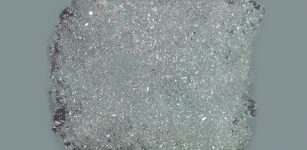Astronomers Listen For Signs Of Intelligent Life From Unusual `Oumuamua Asteroid
MessageToEagle.com – Astronomers used the Murchison Widefield Array (MWA) telescope to listen to a mysterious cigar-shaped object that entered our Solar System late last year.
The unusual object—known as ‘Oumuamua—came from another solar system, prompting speculation it could be an alien spacecraft. While they did not find any signs of intelligent life, the research helped expand the search for extra-terrestrial intelligence (SETI) from distant stars to objects closer to home.

‘Oumuamua was first discovered by the Pan-STARRS project at the University of Hawaii in October and astronomers thought it was a comet or an asteroid from within the Solar System. But after studying its orbit and discovering its long, cylindrical shape, they realized ‘Oumuamua was neither and had come from interstellar space. Its name loosely means “a messenger that reaches out from the distant past” in Hawaiian, and is the first known interstellar object to pass through our Solar System.
Telescopes around the world trained their gaze on the mysterious visitor in an effort to learn as much as possible before it headed back out of the Solar System, becoming too faint to observe in detail.
See also:
Cucumber-Shaped Asteroid ‘Oumuamua’ Had A Violent Past – Researchers Say
‘Oumuamua With Highest Eccentricity Ever Observed, Originates From Binary Star System
“We didn’t set out to observe this object with the MWA but because we can see such a large fraction of the sky at once, when something like this happens, we’re able to go back through the data and analyse it after the fact,” said Professor Steven Tingay who works for the International Centre for Radio Astronomy Research at Curtin University.
“If advanced civilizations do exist elsewhere in our galaxy, we can speculate that they might develop the capability to launch spacecraft over interstellar distances and that these spacecraft may use radio waves to communicate.”
“Whilst the possibility of this is extremely low, possibly even zero, as scientists it’s important that we avoid complacency and examine observations and evidence without bias.”
“We found nothing, but as the first object of its class to be discovered, `Oumuamua has given us an interesting opportunity to expand the search for extra-terrestrial intelligence from traditional targets such as stars and galaxies to objects that are much closer to Earth, Professor Tingay said.
“This also allows for searches for transmitters that are many orders of magnitude less powerful than those that would be detectable from a planet orbiting even the most nearby stars.”
Combining observations from a host of telescopes, scientists have determined that `Oumuamua is most likely a cometary fragment that has lost much of its surface water because it was bombarded by cosmic rays on its long journey through interstellar space.
There could be more than 46 million similar interstellar objects crossing the Solar System every year but they are too far away to study with current technologies, only telescopes such as the Square Kilometre Array (SKA) will enable scientists to observe and better understand these far away interstellar objects.
MessageToEagle.com
Related Posts
-
 ‘Tadpole’ Molecular Cloud Appears To Be Playing Around Black Hole
No Comments | Feb 17, 2023
‘Tadpole’ Molecular Cloud Appears To Be Playing Around Black Hole
No Comments | Feb 17, 2023 -
 Alien World K2-18b In Constellation Leo Is Solid Like Earth But Several Times Larger
No Comments | Dec 6, 2017
Alien World K2-18b In Constellation Leo Is Solid Like Earth But Several Times Larger
No Comments | Dec 6, 2017 -
 To Find Life On Other Planets, NASA Rocket Team Looks To The Stars
No Comments | Nov 5, 2021
To Find Life On Other Planets, NASA Rocket Team Looks To The Stars
No Comments | Nov 5, 2021 -
 White Dwarfs Are Responsible For Formation Of Cosmic Carbon In Our Universe – New Study
No Comments | Jul 16, 2020
White Dwarfs Are Responsible For Formation Of Cosmic Carbon In Our Universe – New Study
No Comments | Jul 16, 2020 -
 NASA’s James Webb Space Telescope (JWST) Found Most Distant Galaxy
No Comments | Jun 3, 2024
NASA’s James Webb Space Telescope (JWST) Found Most Distant Galaxy
No Comments | Jun 3, 2024 -
 Next Ten Years, We’ll See More Objects Like ‘Oumuamua – Researchers Say
No Comments | Jul 2, 2019
Next Ten Years, We’ll See More Objects Like ‘Oumuamua – Researchers Say
No Comments | Jul 2, 2019 -
 PS1-10adi: New Type Of Highly Energetic Cosmic Explosions – Discovered
No Comments | Nov 15, 2017
PS1-10adi: New Type Of Highly Energetic Cosmic Explosions – Discovered
No Comments | Nov 15, 2017 -
 Old Star W43A: Peculiar ‘Water Fountain’ Object’ Alters Its Environment
No Comments | Mar 5, 2020
Old Star W43A: Peculiar ‘Water Fountain’ Object’ Alters Its Environment
No Comments | Mar 5, 2020 -
 Parent Body Materials In Ryugu Asteroid – Identified
No Comments | Sep 26, 2022
Parent Body Materials In Ryugu Asteroid – Identified
No Comments | Sep 26, 2022 -
 Astronomers Capture Surprising Changes In Neptune’s Temperatures
No Comments | Apr 13, 2022
Astronomers Capture Surprising Changes In Neptune’s Temperatures
No Comments | Apr 13, 2022
